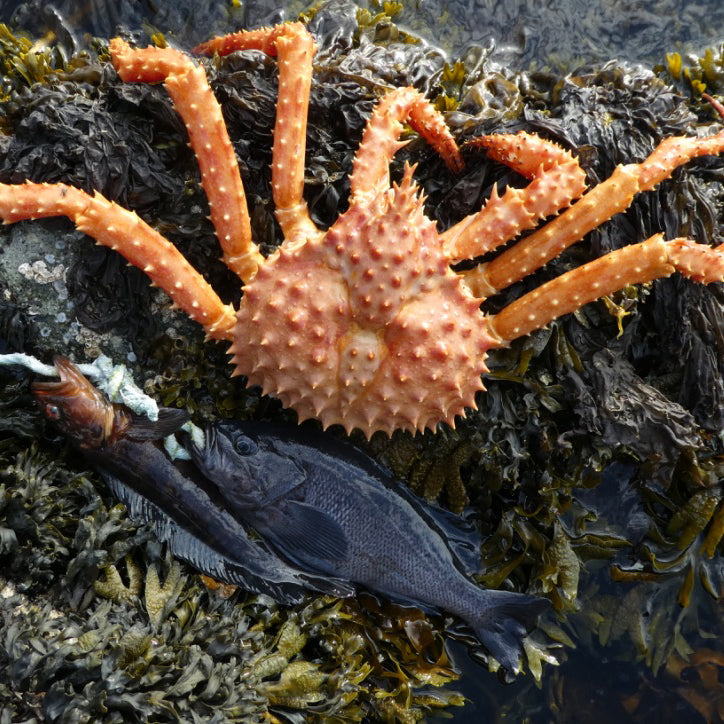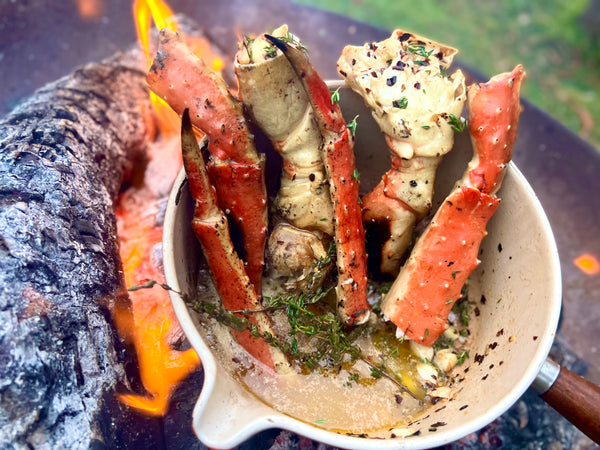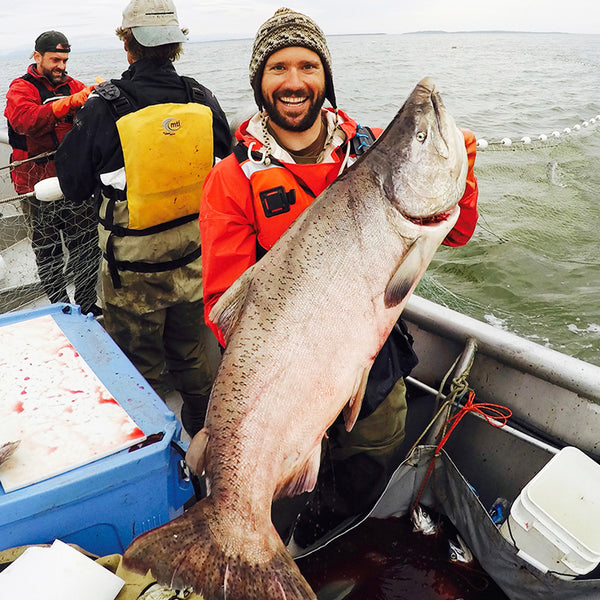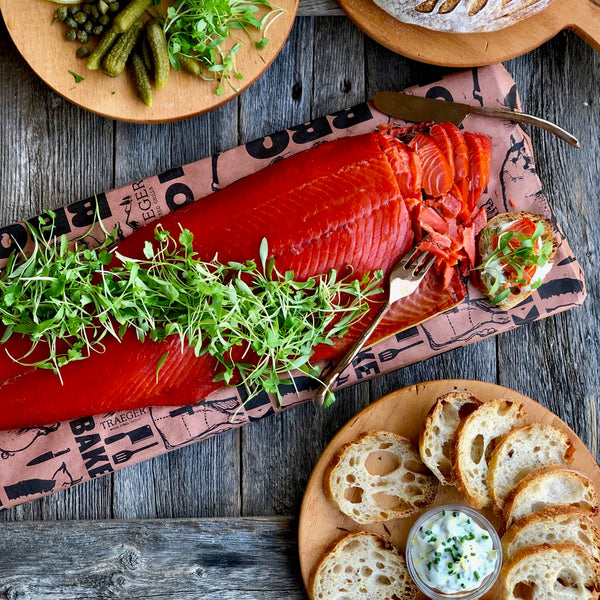King of the Crab (updated 12.7.23)

(Updated 12.7.23)
This is the time of year when king crab come across the docks of Alaska. It's also something I offer my customers just once per season––right now! With delicious crab just around the corner, it's worth taking a moment to talk about crab sourcing and why, like any food you feed your family, it is so important.
If you’re in the habit of looking closely at labels, you may have noticed Russian king crab in stores near you. If there is no label, it’s certainly from Russia. And even sometimes crab labeled as Alaskan, is still from Russia. The iron curtain was drawn back long ago and I feel no ill will toward our Russian comrades (or their crab) across the Bering Sea from my fishcamp. And to be fair, there is a regulated king crab fishery in Russia. But not all regulated fisheries are created equally. It’s hard to trust a system where, by some estimates, more than half of its crab are caught and sold outside the regulated system––i.e. illegal, pirate-caught crab (5). This could represent as much as $700 million in crab (4). Fisheries management in a system like this is clearly doomed. Although the Russian government has recently attempted to crack down on illegal crab fishing, poachers are becoming increasingly sophisticated. It’s not uncommon for these illegal vessels to fish, cook, and freeze, then deliver/sell directly to Korea without ever entering a Russian port. Some of the vessels fly “flags of convenience,” which allows them to further flaunt regulations and inspections (1).
In addition to a significant portion of Russia’s crab catch likely coming from illegal fishing, more than half of the country’s catch is fished from a non-native population of crab in the Barents Sea near Norway. These are invasive species. In the 1930’s the Russian government seeded the Barents Sea with crab procured from their eastern fishery, but they didn’t take. They tried again in the 1960’s. This time they did take. By the 1970’s the odd crab was caught by fishermen, and by the 1990s crab were plentiful and a large scale commercial fishery was established (2). Since then there has been widespread concern among fisherman, fisheries biologists, and marine biologists that the significant influx may be permanently altering the ecosystem. There is not currently enough research to accurately assess the impact.
While Russian king crab catch quotas rise significantly as do Russian king crab catches and exports, Alaska’s king crab fishery continues to scale back at the direction of Fish and Game biologists. While Alaska has reduced it commercial catch quotes based on comprehensive and publicly accountable research, Russia has consistently upped it catch quotas. It's not hard to imagine that a Russian crab population crash is looming.
All this means that seeing Russian king crab in stores is far more likely than Alaskan, and it also means that it can be shockingly affordable. I support Alaskan fisheries because I support Alaskan fishermen and I believe fervently in the intelligence and integrity of the Alaska state biologists that have one overarching interest in mind––protecting Alaska’s natural resources in perpetuity.
Update (12.7.23)
Since so much king crab comes to the US from Russia, and since Russia is currently at war and imports from Russia to the US are limited, more than ever many folks are wondering where is their crab coming from? Great question. The short answer is, unless you are actively seeking out Alaskan king crab like the Alaskan golden king crab I offer, your crab is probably still coming from Russia.
Seafood is big business in Russia with $1.2 billion exported to the US from Russia last year, nearly triple the 2016 volume. Although the US banned Russian seafood imports this March in the wake of their war with Ukraine, Russian seafood still makes its way into the US via China. China exports $1.7 billion in seafood to the US annually and there is currently no US system in place to prevent Russian seafood from being among that vast amount. When Russian seafood enters China is becomes one with a vast and complicated food network, which intentionally or unintentionally obscures the species' origin. These products typically receive a "made in China" label with little or no further information on origin. Adding further confusion are species like "Alaska Pollock," which are caught in both Alaska and Russia. Their name alone obscures their origin.
Many Russian seafood companies are closely tied to the Kremlin, according to Aljazeera. Two of the largest seafood businesses in Russia are owned by Gleb Frank, the son of Putin's former transportation minister and the leader of a large state-owned shipbuilder. Frank, the so called Russian Crab King is the son-in-law of Gennady Timchenko, one of the countries richest men and one of the first to be sanctioned by the US during the 2014 Russian invasion of Crimea.
If you'd like to eat king crab this Christmas, buy Alaskan.
Sources:
1. Food and Agricultural Organization of the United Nations. http://www.fao.org/in-action/globefish/market-reports/resource-detail/en/c/1070084/
2. Red king crab (Paralithodes camtschaticus) fisheries in Russian waters: historical review and present status. Reviews in Fish Biology and Fisheries. , Volume 28, Issue 2, pp 331–353.
3. https://www.undercurrentnews.com/2018/01/26/market-impact-of-russian-king-crab-quota-hike-unclear/
4. https://www.bloomberg.com/news/articles/2014-06-19/illegal-king-crab-fishing-off-russia-valued-at-700-million-a-year
5. https://www.forbes.com/sites/johnmccarthy12/2018/02/27/crab-fight-aboard-alaskas-quest-to-be-americas-king-of-crab/#332193751971
6. https://www.washingtonpost.com/archive/politics/2006/12/24/that-alaskan-king-crab-its-probably-russian-span-classbankheadrecent-influx-of-larger-and-cheaper-imports-draws-concern-of-us-watermenspan/c1cf2677-289a-41de-917e-bde7639f1ee3/?noredirect=on&utm_term=.03965ad2c5cc
Leave a comment
Comments will be approved before showing up.



